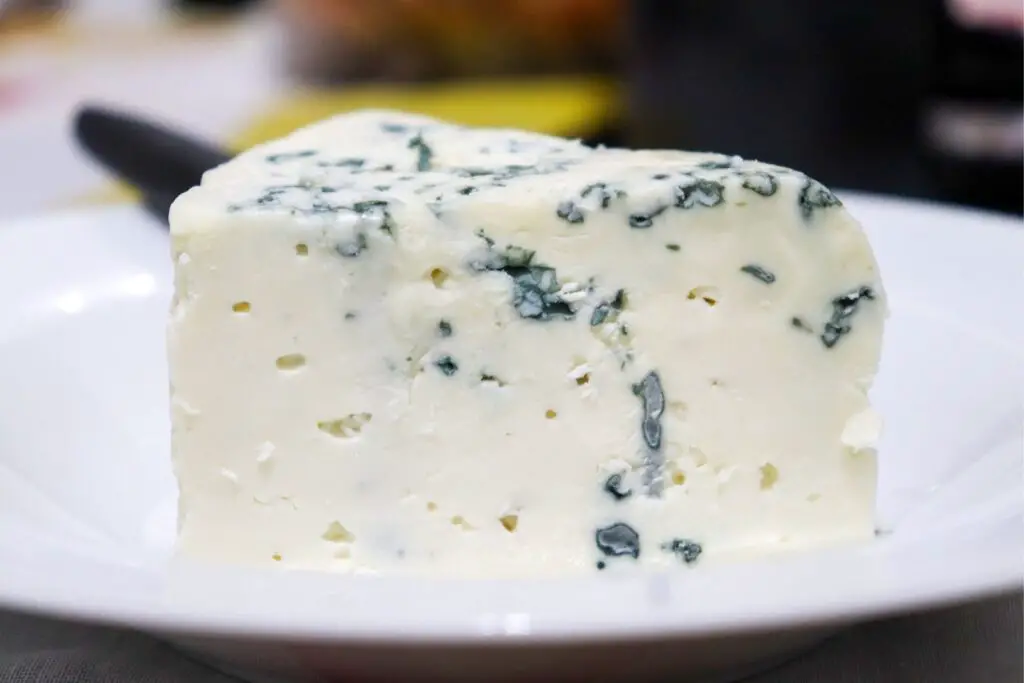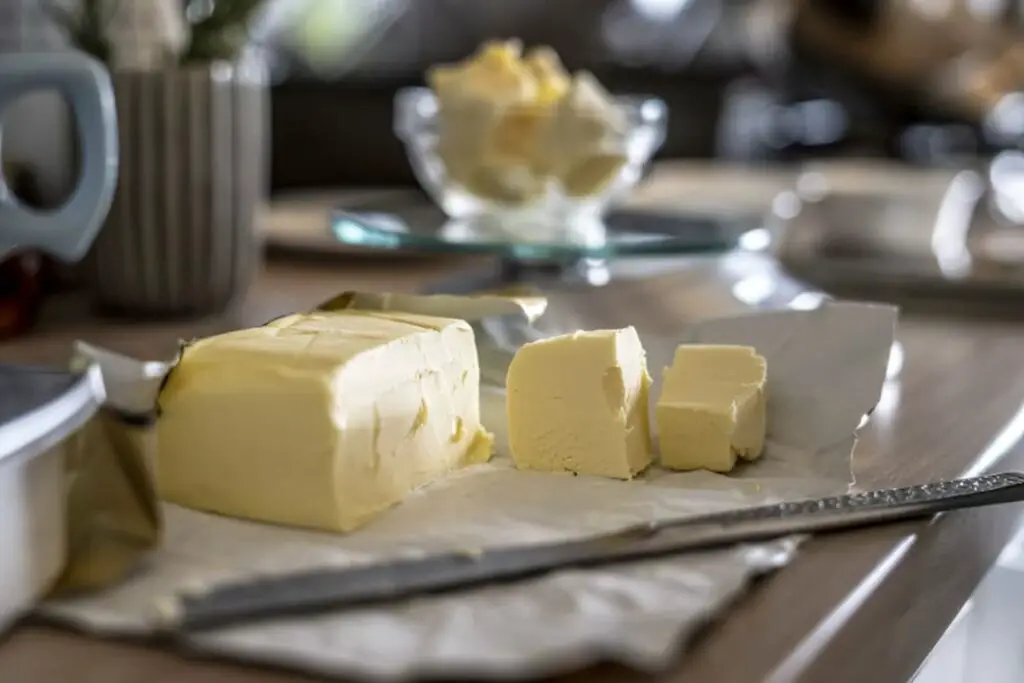
Raclette cheese is a semi-hard cheese hailing from the Alpine regions. Known for its melt-in-your-mouth texture and nutty flavor, raclette cheese has gained popularity as a fantastic ingredient in various dishes. Whether you’ve bought raclette cheese in bulk or wish to save some for a later date, freezing it can be a practical solution. Freezing raclette cheese properly will ensure that its quality and taste are preserved. In this article, we’ll walk you through a step-by-step guide on how to freeze raclette cheese while maintaining its delightful qualities.
Learn the process of freezing raclette cheese below:
Step 1: Choose the Right Raclette Cheese
Raclette cheese, with its rich history and unique characteristics, is a culinary delight that offers a wide range of flavors and textures. As you embark on the journey of freezing raclette cheese, it’s imperative to start with the right type of cheese to ensure the best possible results. This step is vital as the quality of the cheese you freeze directly influences the quality of the thawed product.
When selecting raclette cheese for freezing, consider the following factors:
- Quality and Freshness: Opt for high-quality raclette cheese. Inspect the cheese carefully to ensure it is free from any signs of spoilage, such as mold, off-putting odors, or unusual discolorations. Choose cheese that is at the peak of its freshness to guarantee the best taste and texture after freezing and thawing.
- Consistent Color and Texture: Good raclette cheese should exhibit a consistent color and texture. The color of the cheese can vary from pale yellow to a deeper golden hue, depending on its aging process and the type of milk used. A uniform color is a sign of proper aging and quality. Additionally, the texture should be smooth and free from large air pockets, cracks, or crumbly sections.
- Varietal Considerations: Raclette cheese comes in various styles and varieties, each with its own flavor profile and aging process. Whether you’re dealing with traditional raclette from Switzerland or variations from other regions, understanding the specific characteristics of the cheese you’re freezing can help you make informed choices.
- Avoid Pre-Grated Cheese: Whenever possible, choose a block or wheel of raclette cheese rather than pre-grated options. Pre-grated cheese often contains anti-caking agents that can affect its texture and meltability after freezing and thawing.
- Cheese Aging: Raclette cheese can range from young and mild to aged and robust in flavor. The aging process contributes significantly to the cheese’s taste and texture. Keep in mind that more aged raclette cheese tends to have a stronger flavor and might be better suited for melting than consumption as is.
Step 2: Portion and Wrap the Cheese
After carefully selecting the ideal raclette cheese for freezing, the next critical step involves preparing the cheese for its time in the freezer. Properly portioning and wrapping the cheese ensures that it remains fresh, maintains its texture, and is easy to manage when you’re ready to use it.
- Dividing into Portions:
Begin by determining the portion sizes that best suit your culinary needs. It’s advisable to divide the raclette cheese into portions that you’re likely to use in a single serving. This practice prevents the need to thaw more cheese than necessary and avoids repeated thawing and refreezing, which can negatively impact the cheese’s structure and flavor.
- Preventing Texture Changes:
Thawing and refreezing raclette cheese can lead to changes in its texture. The moisture content in the cheese can crystallize, resulting in a less desirable consistency. By portioning the cheese appropriately, you’ll be able to thaw only the amount you intend to use, minimizing the risk of texture degradation.
- Wrapping for Protection:
Once the cheese is portioned, the next step is to wrap each portion securely. The wrapping serves two crucial purposes: it prevents air exposure and moisture loss while safeguarding the cheese from absorbing unwanted odors from the freezer.
Use plastic wrap or aluminum foil to encase each individual portion. Wrap the cheese tightly to eliminate any air pockets within the packaging. Air exposure can lead to freezer burn, which affects the cheese’s taste and texture.
- Choosing the Right Wrapping Material:
When selecting between plastic wrap and aluminum foil, consider the duration for which you plan to freeze the cheese. Aluminum foil offers better protection against moisture and air, making it an excellent choice for long-term freezing. Plastic wrap is suitable for shorter periods but may not provide as effective a barrier against freezer-related issues.
- Secure Wrapping:
Ensure that the wrapping is secure and well-sealed. Pay special attention to the ends and seams to prevent any openings that might allow air in or out.
Can I freeze raclette cheese slices or wedges?
Yes, you can freeze raclette cheese slices or wedges. Portion them appropriately, wrap tightly in plastic wrap or aluminum foil, and place in freezer-safe bags. Proper packaging helps maintain the cheese’s quality during freezing. Thaw gently in the refrigerator before use.
Step 3: Vacuum Sealing (Optional)
As you embark on the journey of freezing raclette cheese, you have the option to elevate your preservation efforts by employing a vacuum sealer. This technique involves removing excess air from the packaging, creating an airtight environment that offers several benefits for maintaining the quality of your frozen cheese.
Understanding Vacuum Sealing:
A vacuum sealer is a device that removes air from plastic bags or containers, sealing the contents in an airtight environment. This method is widely used for various food preservation purposes, including freezing, as it significantly reduces the risk of freezer-related issues.
Advantages of Vacuum Sealing:
- Minimizes Freezer Burn: One of the primary advantages of vacuum sealing raclette cheese is its ability to minimize freezer burn. Freezer burn occurs when moisture within the cheese forms ice crystals on its surface due to exposure to air. These ice crystals can lead to changes in taste, texture, and overall quality. Vacuum sealing prevents air contact, thus reducing the chances of freezer burn.
- Preserves Texture and Flavor: Vacuum-sealed packaging helps maintain the original texture and flavor of raclette cheese. By preventing air from coming into contact with the cheese, the moisture content remains consistent, and the cheese’s natural taste is better preserved.
- Extended Storage Life: Vacuum-sealed packages have an extended shelf life compared to traditionally wrapped packages. The absence of air and its damaging effects allows the cheese to remain in optimal condition for a longer period.
- Protection Against Odors: Raclette cheese can easily absorb odors from the freezer, affecting its taste and aroma. Vacuum sealing acts as a barrier against external odors, ensuring that the cheese retains its intended flavors.
Usage Considerations:
While vacuum sealing offers numerous benefits, it’s essential to consider a few points:
- Cheese Type: Vacuum sealing works exceptionally well for raclette cheese, as it’s a solid cheese with relatively low moisture content. However, it might not be suitable for cheeses with high moisture content, as the vacuum-sealing process could alter their texture.
- Moisture Control: Before vacuum sealing, ensure that the raclette cheese portions are dry. Excess moisture can interfere with the sealing process and potentially compromise the vacuum-sealed package’s integrity.
- Vacuum Sealing Equipment: If you decide to vacuum seal, make sure you have the appropriate equipment designed for food preservation. Follow the manufacturer’s instructions for proper usage.
While vacuum sealing is an optional step, it can significantly enhance the effectiveness of raclette cheese freezing. By eliminating excess air and providing an additional layer of protection, vacuum-sealed raclette cheese retains its original taste, texture, and quality, elevating your culinary experience when you’re ready to indulge in its deliciousness.
Step 4: Place in Freezer Bags
After meticulously wrapping your raclette cheese portions, it’s time to take the next step in the freezing process: transferring the wrapped cheese into specially designed freezer bags. This pivotal step involves creating a secondary layer of protection to ensure that your frozen raclette cheese retains its optimal quality.
- The Role of Freezer Bags:
Freezer-safe plastic bags are designed to withstand the cold temperatures of the freezer without becoming brittle or prone to cracking. These bags act as a barrier against external factors that could compromise the taste and texture of the cheese.
- Minimizing Air Exposure:
When placing the wrapped raclette cheese portions into the freezer bags, it’s essential to minimize the amount of air within the bags. Air exposure can lead to freezer burn, which can affect the quality of the cheese. Freezer burn occurs when moisture from the cheese comes into contact with the air, forming ice crystals on the surface. These ice crystals can alter the cheese’s texture and flavor.
- Squeezing Out Air:
Before sealing the freezer bags, gently squeeze out as much air as possible from the bags. This step is crucial in preventing the formation of ice crystals on the cheese’s surface. Squeezing out air reduces the air pockets within the bag, creating a snug environment for the wrapped cheese portions.
- Proper Sealing:
To effectively shield the cheese from freezer-related challenges, ensure that the freezer bags are tightly sealed. A secure seal prevents air and moisture from entering the bags, preserving the cheese’s taste and texture. It also prevents the cheese from absorbing unwanted odors from the freezer.
- Freezer Odors and Moisture Protection:
Raclette cheese, like many other foods, can absorb odors from the freezer. Proper sealing within freezer bags prevents these odors from affecting the cheese’s flavor. Additionally, it acts as a barrier against moisture, which can lead to undesirable texture changes.
Can I freeze raclette cheese directly in its original packaging?
Repackaging raclette cheese before freezing is recommended. Original packaging might not provide adequate protection against moisture and air exposure. Use airtight wraps or freezer-safe bags to maintain the cheese’s quality during freezing.
Step 5: Label and Date
As you proceed with the freezing process for your raclette cheese, taking a moment to label and date each package is a small yet crucial step that has significant benefits. Properly labeling and dating your frozen cheese portions helps you stay organized and informed about the contents of each package, ensuring that you can enjoy the cheese at its best even after extended periods in the freezer.
- Importance of Labeling:
Labeling each package with the type of cheese provides clarity, especially if you have multiple varieties of cheese in your freezer. Raclette cheese may share space with other cheeses or frozen items, and clear labeling eliminates any confusion about the contents of each package.
- Maintaining Freshness and Quality:
When you label raclette cheese with the date it’s being frozen, you establish a timeline for how long it has been in the freezer. This information is invaluable in ensuring that you consume the cheese within its optimal time frame. While frozen cheese can remain safe for consumption indefinitely, its taste and texture may begin to deteriorate over time. By knowing when the cheese was frozen, you can prioritize using older packages first, ensuring that you enjoy the best possible quality.
- Preventing Freezer Burn and Flavor Changes:
The date of freezing also aids in preventing freezer burn and flavor degradation. Frozen cheese that has been stored for an extended period might experience changes in texture and taste. With labeled packages, you can identify cheese portions that have been frozen for a while and prioritize their consumption before the quality begins to decline.
- Organizational Benefits:
Labeling and dating each raclette cheese package contribute to an organized freezer space. When you’re in the mood for raclette or need it for a specific recipe, you won’t have to rummage through packages guessing which one is freshest. The labels streamline your access to the desired portions, saving time and reducing the likelihood of mishandling the cheese.
- Using a Permanent Marker:
A permanent marker is an ideal choice for labeling as it withstands freezing temperatures and doesn’t smudge or fade. It’s important to label the bags before they go into the freezer, as writing on frozen plastic can be challenging and might not adhere well.
Step 6: Arrange in the Freezer
As you progress through the process of freezing raclette cheese, how you arrange the labeled packages within your freezer plays a significant role in maintaining the quality and accessibility of your frozen cheese portions. Proper arrangement offers several benefits that contribute to optimal preservation and ease of use.
- Even Freezing:
Laying the labeled raclette cheese bags flat in the freezer promotes even freezing. Placing the bags in a flat position allows the cold air to circulate around the cheese portions uniformly. This even distribution of cold air helps prevent the formation of large ice crystals within the cheese, which can impact its texture and flavor.
- Minimizing Temperature Fluctuations:
A flat arrangement also minimizes temperature fluctuations within the freezer. When items are stacked haphazardly, air circulation can be restricted, leading to uneven cooling. This can result in variations in freezing times and potentially affect the overall quality of the frozen cheese.
- Space Efficiency:
Laying the bags flat maximizes the space within your freezer. This arrangement makes efficient use of the available storage area, allowing you to store more raclette cheese portions and other frozen items. The saved space can be valuable for organizing your freezer and making room for future additions.
- Easy Stacking and Retrieval:
A flat arrangement facilitates easy stacking and retrieval of the labeled raclette cheese packages. When you need to access a specific portion, you can simply lift or slide out the desired bag without disturbing the surrounding packages. This organized system reduces the risk of accidentally damaging the cheese or disrupting the freezing process.
- Visual Identification:
A flat arrangement also enables better visibility of the labeled packages. You can quickly identify the type of cheese and its freezing date without having to move or rearrange packages. This visual identification saves time and prevents unnecessary handling of the cheese.
- Long-Term Storage Considerations:
If you plan to store raclette cheese for an extended period, consider arranging the bags so that older packages are in front and newer ones are placed behind. This approach ensures that you use the oldest packages first, minimizing the chances of forgetting about frozen cheese and allowing it to remain in storage for too long.
What is the ideal storage duration for frozen raclette cheese?
Frozen raclette cheese can maintain its quality for several months. For optimal taste and texture, it’s recommended to consume it within 3 to 6 months of freezing. Beyond this period, the cheese might experience slight changes in texture and flavor.
Step 7: Thaw and Use
After patiently freezing your raclette cheese with care, the time eventually comes to savor its delectable flavors. However, the process of thawing the frozen cheese is just as crucial as the freezing process itself. Proper thawing ensures that your raclette cheese maintains its texture, taste, and overall quality for a delightful culinary experience.
- Gentle Thawing Process:
When you’re ready to enjoy your frozen raclette cheese, the key is to thaw it gently. This involves a slow and controlled process that allows the cheese to gradually return to its original state without compromising its texture or flavor.
- Transfer to the Refrigerator:
Begin by transferring a labeled bag of frozen raclette cheese from the freezer to the refrigerator. Placing it in the refrigerator provides a controlled and consistently cool environment for the thawing process.
- Time Considerations:
Thawing raclette cheese in the refrigerator takes time, usually a few hours or even overnight, depending on the size of the cheese portion. Patience is essential during this phase to ensure that the cheese thaws evenly and retains its desired qualities.
- Avoid Using Heat:
It’s important to avoid using heat to speed up the thawing process. Rapid thawing through heat can lead to undesirable changes in the cheese’s texture. Excessive heat can cause moisture to escape quickly, potentially resulting in a drier or less palatable cheese. Heating can also cause the cheese to become rubbery or unevenly melted when it’s eventually used for dishes like raclette melting.
- Preserving Texture and Flavor:
Gentle thawing helps preserve the cheese’s texture and flavor. The gradual temperature change prevents shock to the cheese’s structure, allowing it to maintain its characteristic melt-in-your-mouth quality.
- Planning Ahead:
Given the time required for proper thawing, it’s advisable to plan ahead. If you know you’ll be using raclette cheese for a specific meal, transfer the desired portion from the freezer to the refrigerator the night before or early in the morning to ensure it’s ready when you need it.
- Culinary Excellence:
By following the recommended thawing process, you’re setting the stage for culinary excellence. Thawed raclette cheese that has been treated with care and patience will melt beautifully and offer the same delightful experience as fresh cheese.
Other related questions
Can I refreeze raclette cheese?
Refreezing raclette cheese is not recommended due to potential quality degradation. Frequent thawing and refreezing can alter texture and flavor. Consume thawed raclette promptly for best results.
How do I know if the raclette cheese has gone bad after being frozen?
Inspect raclette cheese for signs of freezer burn, like dryness or crystallization. Sour odor, mold growth, or off-color patches indicate spoilage. Thawed cheese showing major texture changes might be less palatable.
Can I freeze raclette cheese that has been melted?
Freezing melted raclette cheese is not recommended. The texture can change significantly upon thawing, affecting its quality for consumption. It’s best to freeze raclette cheese in its original form for better results.
Does freezing raclette cheese affect its flavor?
Freezing raclette cheese can slightly impact its flavor, but proper packaging and thawing methods help minimize changes. The cheese might retain its taste better when used in melted dishes or recipes that emphasize its melting properties.
Can I freeze raclette cheese rinds for later use?
Freezing raclette cheese rinds is not recommended, as they may become brittle and affect cheese quality. It’s best to use rinds fresh for optimal taste and texture in your culinary creations.
What dishes can I make with thawed raclette cheese?
Thawed raclette cheese is versatile for various dishes. It’s excellent for melting over potatoes, vegetables, or meats. Create gratins, fondues, sandwiches, and paninis for a delightful culinary experience. Experiment with recipes that emphasize its melting properties.
Is freezing raclette cheese suitable for all culinary applications?
Freezing raclette cheese is suitable for culinary applications that emphasize melting, like fondue or melted sandwiches. However, slight texture changes upon thawing might make it less suitable for direct consumption. Adapt its use based on the intended dish and the desired cheese characteristics.








